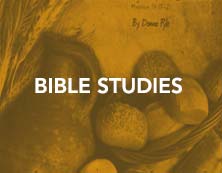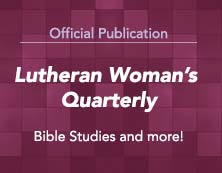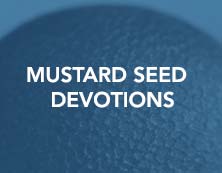PARLIAMENTARY PHRASES TO USE WHEN PRESIDING
- “The meeting will come to order” (one tap of the gavel). (The president stands to say this so that members will become quiet and attentive.)
- “ will lead us in opening devotions (or Bible study).”
- “Thank you, . The secretary will call the roll” (optional).
- “The secretary will read the minutes of the previous meeting.” (Often copies of the minutes are sent to members ahead of the meeting. If this is done, minutes need not be read, but corrections must be called for.)
- “Are there corrections to the minutes?” (pause)
“If not, they stand approved as read (or as distributed).”
(If there are corrections to the minutes, the chairman repeats the corrections for the secretary and for the assembly to hear, in case there might be an objection to the correction); then the chair continues
- “Are there any further corrections to the minutes? If not, they stand approved as corrected.” [Under her signature, the secretary adds “Approved (or approved as corrected) and the date.”]
- “Are there corrections to the minutes?” (pause)
- “The treasurer will now read the financial (or treasurer’s) report.”
- “Are there any questions for the treasurer?” (Any questions are answered.)
- “The treasurer’s report will be placed on file (or will be filed).” (The chair does not say, “Will be filed for audit” because it is the books that are audited, not the reports.)
- “Are there any questions for the treasurer?” (Any questions are answered.)
- “The next item of business is officers’ reports, followed by the reports from standing committees.” (Officers and committee chairmen usually report in the order they are listed in the bylaws.)
- “The next item of business is the reports of special committees.”
- “The next item is special orders.” (Special orders can be matters required by the bylaws to be considered at a particular meetings, such as nominations, elections, and/or reporting of the audit/review committee. To begin consideration of special orders, the chair asks the secretary to read the provision in the bylaws describing the order.)
- “The next item listed on the agenda is unfinished business.” (“Unfinished” business is the correct term; it’s never called “old” business. The chair does not ask if there is unfinished business, but rather just brings before the group subjects discussed but not resolved in the previous meeting.)
- The chairman then introduces new items of business, having been apprised of any new business before the meeting. She also may ask, “Is there any new business?”
- The chair makes any announcements she has prepared and invites members for others. (If desired, before announcements are given, an “open forum” could be introduced where members offer informal observations on the work of the organization.)
- Present the program. (Some groups host the program before the meeting, which encourages guests to attend and be uplifted and informed by the speaker or presentation. Then a few minutes are usually scheduled between the end of the program and the beginning of the meeting to allow time for guests to leave if they wish. However, if the program occurs after the meeting, adjournment is usually delayed until the program is finished in the event the program prompts a desire on the part of the assembly to take action.)
- The chair states: “If there is no objection, the meeting will adjourn.” (pause)
- “Since there is no objection, the meeting is adjourned”; or
- “Is there any further business?” (pause)
Since there is no further business, the meeting is adjourned (one tap of gavel).
- “Since there is no objection, the meeting is adjourned”; or
- Closing prayer/hymn (led by someone appointed ahead of time.)
DEFINITIONS OF PARLIAMENTARY TERMS
Agenda — outline of business to be covered at a meeting.
Assembly — refers to the members of an organization who have gathered together for the purpose of a meeting.
Ex Officio — by virtue of the office. A president is a member of all committees except the Nominating Committee by virtue of the office held.
Meeting — gathering of persons of an organization usually for the purpose of conducting business.
Minutes — the official records of the proceedings of a deliberative assembly. The secretary records what is done (not what is said) in the meeting.
Motion — formal proposal that the assembly take certain action.
- Main Motion — introduces a new subject to the assembly when no business is pending.
-
Secondary Motion — is used when a main motion is pending and then takes precedence for the time being over the main motion. There are three (3) classes of secondary motions:
- Subsidiary Motions — those that can be applied to other motions to aid in perfecting or disposing of the main motion (to postpone, to amend, to commit).
- Privileged Motions — apply to the immediate needs of the assembly, do not relate to the pending business and may interrupt consideration of other questions (to raise a question of privilege).
- Incidental Motions — rise out of the pending motion, rather than the business itself, usually must be decided immediately (point of order, division of a question).
Parliamentary Law — consistent set of rules that govern the procedure of all deliberative assemblies.
Pending — refers to business before the assembly. The question is said to be pending from the time it is stated by the chair until it is disposed of. The immediately-pending question is the last question stated by the chair.
Pro tem — for the time being.
Question — motion made by a member, seconded by another, and then stated by the chair after which it is the business of the assembly.
Quorum — refers to number of members who must be present in order to transact business legally.
Resolution — main motion, usually of such importance and length that it is written and distributed ahead of time. It may contain a preamble that sets forth the reason for the resolution.
Rules — the laws governing the transaction of business, the structure of the organization, and its purposes. The various kinds of rules of an organization include the following:
- Articles of Incorporation — the organization’s legal instrument.
- Bylaws— the basic rules of the group, so important that they cannot be easily changed or suspended.
- Rules of Order — written rules of parliamentary procedure widely accepted by ordinary LWML groups. (LWML has adopted the current edition of Robert’s Rules of Order Newly Revised as its parliamentary authority.)
- Standing Rules — rules related to details of administration that can be adopted or changed as easily as an ordinary motion.
Session — series of meetings. A convention is usually a session with a series of meetings.
Special Orders — usually matters that are required by the bylaws to be considered at a particular meeting, such as nominations, elections, report of the auditing committee, etc.
Unfinished Business — business that is carried over from the previous meeting. Unfinished business is never referred to as “old business.”
Voting Terms:
- Aye and No — voice votes and the type of vote most often used in deliberative assemblies. In LWML a show of hands is called for also.
- Division of the Assembly — always means a standing vote. “Division!” may be called out without obtaining the floor when there is any doubt about the result of a voice vote that has just been taken. The vote does not have to be counted, but the chair may direct that this be done.
- Majority Vote — a vote count amounting to more than half of the votes cast.
- Plurality Vote — the largest number of votes given one candidate when three or more choices are available. It is used in elections where there are several names or items to be chosen, such as grant proposals or the nominating committee. To decide an election of one person by plurality vote is not in the best interests of a group.
- Rising Vote – a vote where the members of the assembly stand to have their vote counted.
- Two-Thirds Vote — two-thirds (2/3) of the votes cast. For the motion to pass, the affirmative vote must be at least twice as large as the negative vote. A two-thirds vote should be taken by a rising vote. (Don’t combine terms by saying “two-thirds majority” It confuses the issue.)
Yield — give way to. A pending motion may yield to one of higher rank.
PARLIAMENTARY SEQUENCE OF MOTIONS AND SECONDS
Motion — a formal proposal by a member in a meeting that the assembly take certain action. The purpose is to bring business before an assembly.
Second — ensures that more than one person wishes the matter brought to the floor.
- The requirement of a second or “support” prevents an assembly having to spend time disposing of a matter that only one person wants to discuss.
- It therefore follows that a motion made by direction of a board or duly appointed committee needs no second since its very source indicates that more than one person favors discussion of this business.
Three steps in bringing a motion to the floor:
- A member makes the motion.
- Another member seconds the motion.
- The chair states the question of the motion (places it before the assembly) and it is then open to debate.
- Until the chair states the question, the maker has the right to modify it or to withdraw it completely.
- However, once a motion has been made (seconded or not) and before the chair has stated the question, any member can rise, and without recognition, say “Madam President, I would like to ask the maker of the motion if she will accept the following modification…”
- The maker can accept, not accept, or offer different wording.
- If the maker modifies a question before it is stated, the person who has seconded it may withdraw the second.
- If another member’s suggested change is accepted (either before or after it has been seconded) the person suggesting the change has, in effect, seconded the modified version and no other second is necessary.
After the chair states the question, three other steps follow:
- Members debate the question with the maker of the motion speaking first, if she wishes.
- Other speakers follow as recognized by the chair.
- All remarks are addressed to the chair (not to other members) in a courteous and impersonal tone.
- The chair puts the question (puts it to a vote).
- The chair announces the result of the vote.
No motion is necessary to accept officers’ reports — they are for informational purposes.
- If a recommendation arises from an officer’s report, a motion on the proposal should come from a member of the assembly and not the officer giving the report.
- However, the chairman of a committee can make a motion on behalf of her committee and no second is needed before the president states the question.
- A motion arising from the report of an officer, board, or committee is taken up immediately since the object of the order of business is to give priority to the classes of business in the order listed.
Motions are not necessary for accepting minutes and financial reports.
- After the reading of the minutes, the president asks for corrections, then says, “If there are no corrections (or further corrections), the minutes stand approved as read (or as corrected).”
- While questions may be asked of the financial officer, the financial report requires no action by the assembly.
- However, if the financial report has been audited or reviewed (as at the end of the fiscal year), the chair (without motion or second) states the question on adopting the audit or financial review and the vote is taken immediately.
- The reason for action on the audit or financial review is that its adoption has the effect of relieving the treasurer of responsibility for the period covered, except in the case of fraud.
PARLIAMENTARY PHRASING TIPS FOR THE PRESIDENT
In a group of 30 or more, the president should stand:
- To call the meeting to order (one tap of the gavel);
- To declare the meeting adjourned; and
- To state a motion, put it to a vote, and announce the result.
When a member offers a motion, the president:
- states the motion word for word (never “You have heard the motion,” as some may not have heard); and
- may courteously suggest a motion or the wording of a motion (to help a member who is having difficulty putting thoughts into words).
When a motion requiring a second is not seconded promptly, the president says: “Is there a second to the motion?” (Never “Do I hear a second?”)
When no second is offered, the President says: “There being no second, it is not before the assembly.” (Never “The motion is lost;” it is not lost, as there was no vote.)
Unless the assembly has ordered it, the president never closes debate herself.
When debate appears to have come to an end, the chair may ask: “Are you ready for the question?”
If no one asks for recognition, the chair then puts the question to a vote.
If discussion of a certain question seems to be getting repetitious, a member may “move the previous question (a motion to close debate). But the member must not interrupt another speaker and must be recognized by the chair.
The motion to close debate must be voted on immediately. If it receives a two-thirds affirmative vote, the chair then puts the pending question to a vote at once.
Although the affirmative vote may seem overwhelming, the chairman always asks for the negative vote on all motions requiring a vote. Even a small negative minority has the right to be part of the vote. (An exception is a courtesy resolution.)
Often the will of the assembly can be determined by general consent. The chair says, “If there is no objection, we will vote by general consent.” She then pauses to hear any objection. If no objections are heard, she announces: “Since there is no objection,” and then states what seems to be the group consensus. If there is objection, a motion must be offered and voted on.
When a two-thirds (2/3) vote is required for adoption of a motion, a rising vote is taken.
The president must always declare the result of every vote and state what the action will (or will not) be as a result of the vote.
The vote count is based not on the number eligible to vote, but on the number of members voting.
A person who abstains is giving up the vote and thus has no influence in the results.
Order of Precedence of Motions
|
1 |
2 |
3 |
4 |
5 |
Motion |
|
|---|---|---|---|---|---|---|
|
- |
x |
a |
x |
- |
Fix the Time to which to Adjourn. |
12 |
|
- |
x |
b |
- |
- |
Adjourn. |
11 |
|
- |
x |
c |
x |
- |
Take a Recess. |
10 |
|
- |
x |
- |
- |
- |
Raise a Question of Privilege. |
9 |
|
- |
x |
- |
- |
- |
Call for the Orders of the Day. |
8 |
|
- |
- |
- |
- |
- |
Lay on the Table. |
7 |
|
- |
- |
- |
- |
x |
Previous Question. |
6 |
|
- |
- |
- |
- |
x |
Limit or Extend Limits of Debate. |
5 |
|
x |
- |
- |
x |
- |
Postpone to a Certain Time. |
4 |
|
x |
- |
- |
x |
- |
Commit or Refer. |
3 |
|
x |
- |
- |
x |
- |
Amend. |
2 |
|
x |
- |
- |
- |
- |
Postpone Indefinitely. |
1 |
|
x |
- |
- |
x |
- |
A Main Motion. |
|
Columns:
- Debatable
- Usually privileged
- Not always privileged:
- privileged only when made while another question is pending, and in an assembly that has made not provision for another meeting on the same or the next day;
- loses its privileged character and its main motion if in any way qualified, or if its effect, if adopted, is to dissolve the assembly without any provision for it meeting again;
- privileged only when made while other business is pending;
- Can be amended; and
- Require a two-thirds (2/3) vote for their adoption; the others require only a majority.
HOW TO USE ORDER OF PRECEDENCE OF MOTIONS
- The motion at the top takes precedence over all motions below it on the ladder.
- Any other motion takes precedence over those below it.
- A main motion is in order only when no other motion (above it) is pending.
- Generally, on any given motion, motions above the motion are in order; and those listed below the given motion, which are not already pending, are out of order (except for “Amend” or “Previous Question”).
TYPES OF MOTIONS DEFINED
Adjourn — to close the meeting. Adoption of a motion to adjourn closes the meeting immediately unless the motion specifies a later time for adjourning (in which case it is not a privileged motion).
Amend — modifies the wording of a pending motion before a vote is taken on the pending question. Adoption of the amendment is not a vote to adopt the pending question. If the amendment is not adopted, the pending question stands as originally worded.
Call for Orders of the Day — a privileged motion requiring the assembly to conform to its agenda, program, or order of business, or to take up a general or special order that is due to come up at the time [unless two-thirds (2/3) of those voting wish not to].
Commit or Refer — sends a pending question to committee or task force for further study before being presented to the assembly again in a better format. (This motion can also be used to “go into a committee of the whole” or to “consider informally,” giving the assembly the privilege of discussing the issue more informally as a committee is permitted to do.)
Fix the Time to Which to Adjourn — to set the time, and sometimes the place, for another meeting to continue business before the assembly, with no effect on when the present meeting will adjourn.
Lay on the Table — permits the assembly to temporarily put aside pending business for good reason without specifying a time for taking up the matter again, but allowing for the topic to be reintroduced at the will of the majority. (Often improperly interchanged with Postpone Indefinitely or Postpone to a Certain Time.)
Limit or Extend Limits of Debate — a motion used to:
- reduce the number or length of speeches without specific provision for closing debate;
- specify that at a set time, or after a certain length of time, debate will be closed and the question put to a vote; or
- extend the length of time for debate, or increase the number of speeches permitted, under the regular rules.
Main Motion — introduces business to the assembly for possible action; can be brought to the floor only when no other question is pending.
Postpone Indefinitely — kills a main motion during the session in which it is adopted. It has the effect of relieving the assembly of making a decision on a poorly presented main motion that could have undesirable consequences if either adopted or rejected.
Postpone to a Certain Time — puts off action on a pending question until a specified day, meeting, hour, or after a certain event.
Previous Question — a motion to bring the assembly to an immediate vote on one or more pending questions.
Raise a Question of Privilege — a request concerning the rights and privileges of the assembly or its members, permitting immediate consideration because of its urgency, while business is pending. Examples affecting the assembly: Outside noise makes hearing difficult and a member asks that the meeting be paused while the windows are closed, or guests are present during discussion of a sensitive topic and a member suggests the assembly go into closed session to discuss the issue. Example of questions of personal privilege: a member feels that her position on a certain issue was misrepresented in minutes adopted in her absence, or that unfair charges have been lodged against her.
Recess — a break in the business meeting that does not adjourn the meeting. At end of the recess, business will be taken up at the point where it was interrupted.
CHECK LIST FOR MEMBERS
- Even if the vote is unanimous, the bylaws cannot be amended or suspended at a meeting without previous notice (a protection for absent members), unless the bylaws, themselves, set forth a process for amendment without previous notice.
- It is courteous to inform the president prior to the meeting of a motion you will offer.
- The larger the meeting, the more important it is to avoid walking between the chair and the assembly. Walk to the back of the room and then cross to the other side.
- To get the attention of the chair (to obtain the floor), say “Madame President;” however, do not interrupt a member who is speaking unless it is an emergency.
- The maker of a motion has the right to speak first, but must wait until a second is called and the president has stated the motion.
- It is up to members to keep a meeting running smoothly. Pay close attention to the business at hand. Be alert to respond with a motion or second when in agreement.
- Even remarks outside the meeting should further the group’s objectives.
- Parliamentary law is built on fundamental rights of:
- the majority;
- the minority;
- the individual; and
- the absentee.
Specific rights of members are stated in the bylaws. That is why “ownership” of the bylaws is in each member’s best interest.
View printable PDF of this article, Parliamentary Procedures and Terms








